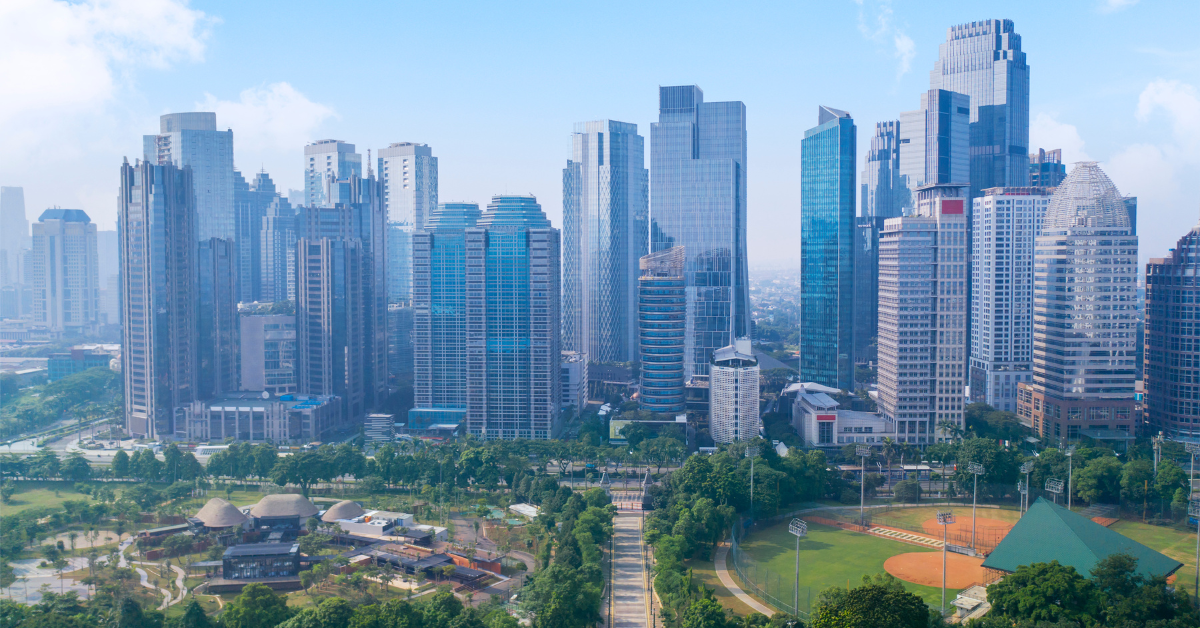Jakarta, the capital of Indonesia, is written in Chinese characters as “雅加達”. This form comes from Chinese phonetic transcription, but Japan has also preserved the historical name “Jagatara”. By tracing its linguistic and cultural background, we can understand not only how the city was recognized in Japan but also what kind of image Japanese people hold today.
The Chinese Character Transcription “雅加達”
The expression “雅加達” for Jakarta is based on Chinese phonetic transcription. The character “雅” conveys elegance and refinement, while “加達” serves to approximate the sound. This results in a pronunciation close to “Jakarta.”
Comparison of notations
| Notation | Language/Region | Pronunciation | Characteristics |
|---|---|---|---|
| 雅加達 | Chinese | Yà jiā dá (Ya-jia-da) | Still used today as the official phonetic transcription |
| 咬𠺕吧 | Japan (Edo period) | Jagatara | Historical phonetic transcription, unique to Japan |
| Jakarta | Indonesian | Jakarta | International official notation |
Thus, even for the same city, the notation and pronunciation vary depending on the era and cultural background.
“Jagatara” in Japan and the History of Phonetic Characters
From the late 16th to the 17th century, Jakarta became known in Japan as “Jagatara.” Through the activities of the Dutch East India Company, it became a familiar name, making Jakarta a real place in the imagination of the Japanese, though distant. At the time, the unique transcription “咬𠺕吧” was used, showing that sound was prioritized over meaning.
Moreover, a record known as “Jagatara Oharu’s Letters” remains from the Edo period. These were letters sent by a Japanese woman who had been banished to Jakarta from Nagasaki, addressed to her relatives in Japan. They serve as evidence of cultural exchange and the connection between Japan and Southeast Asia.
Historical Exchanges Between Japan and Jakarta
| Period | Event | Characteristics |
|---|---|---|
| Late 16th century | Name “Jagatara” introduced to Japan | Contact via the Dutch East India Company |
| Early 17th century | Use of “咬𠺕吧” | Primarily phonetic, meaning secondary |
| Edo period | Jagatara Oharu’s letters | Testimony of Japanese women living abroad |
Through phonetic notations and letters, Jakarta came to be seen as a city connected to Japan.
The Image of Jakarta Among Japanese People
In the modern day, the image Japanese people have of Jakarta is multifaceted. While it is strongly perceived as an economic hub, challenges of daily life are also frequently mentioned.
Images Held by Japanese People
| Positive Image | Negative Image |
|---|---|
| Rapid economic growth | Severe traffic congestion |
| Business hub | Air pollution concerns |
| Cultural and historical diversity | Safety concerns |
| A lively and energetic city | Relatively weak as a tourist destination |
These contrasting evaluations reflect the complex reality of Jakarta.
Jakarta Seen Through Sports
Jakarta also plays an important role as a stage for sports events. In 2018, the Asian Games were held there, drawing international attention. This event served as a trigger for improvements in urban infrastructure.
The soccer club Persija Jakarta, based in the city, is one of Indonesia’s most famous, with a passionate fan base. Japanese players have increasingly joined Southeast Asian clubs, strengthening exchanges through sports.
Jakarta and Sports
| Sport | Feature | Connection with Japan |
|---|---|---|
| Soccer | Persija Jakarta is famous | Japanese players have transferred |
| Badminton | Nationally popular sport | Japan’s national team often competes internationally |
| Asian Games | Hosted in 2018 | Many Japanese athletes participated |
Through sports, Jakarta is becoming a more familiar city to the Japanese.
A City Where History and Modernity Intersect
Jakarta is a city where history and modernity coexist. Dutch colonial-era buildings in the old town stand alongside skyscrapers, and traditional markets operate beside shopping malls. For Japanese people, this cityscape represents a direct experience of another culture.
Urban Characteristics of Jakarta
| Aspect | Traditional Side | Modern Side |
|---|---|---|
| Architecture | Dutch-style buildings in Kota district | High-rise buildings |
| Commerce | Traditional markets | Mega malls |
| Culture | Multi-ethnic coexistence | International urban culture |
This dual nature forms the essence of Jakarta’s charm.
Conclusion
Jakarta is written in Chinese characters as “雅加達”, still used today as a Chinese phonetic transcription. In Japan, it was historically known as “Jagatara,” with phonetic transcriptions and cultural records preserved. For Japanese people today, it is strongly seen as a business city, though concerns about congestion and lifestyle challenges are also mentioned.
However, when considering its sporting events, cultural diversity, and historical heritage, Jakarta clearly emerges as a city of multiple attractions.
Through its changes in notation, historical exchanges, modern economy, sports, and cultural fusion, Jakarta is not only a distant foreign capital but also a city with a deep, evolving connection to Japan.






